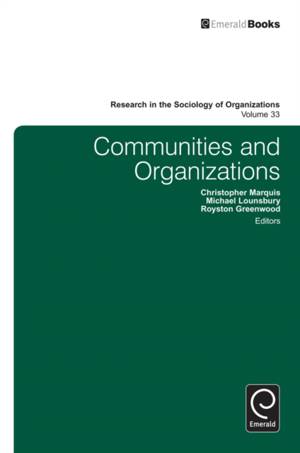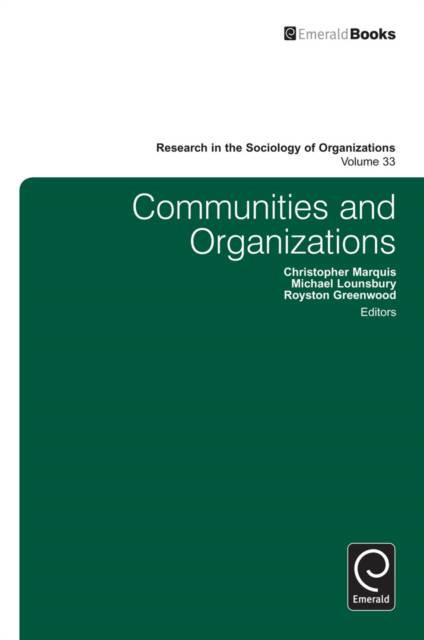
- Afhalen na 1 uur in een winkel met voorraad
- Gratis thuislevering in België vanaf € 30
- Ruim aanbod met 7 miljoen producten
- Afhalen na 1 uur in een winkel met voorraad
- Gratis thuislevering in België vanaf € 30
- Ruim aanbod met 7 miljoen producten
Zoeken
Communities and Organizations
€ 325,45
+ 650 punten
Omschrijving
How does organizations' embeddedness in broader social and cultural communities influence their behavior? And how has this changed with recent communication technology advances and globalization trends? In this volume, we consider how diverse types of communities influence organizations, as well as the associated benefit of developing a richer accounting for community processes in organizational theory. One goal of the volume is to move beyond the focus on social proximity and networks that has characterized existing work on communities. The papers in this volume consider specific topics that expand the definition of community beyond geography to include how transnational communities form and affect organizations' perception, the development of a community-form (C-form) organization as an important organizational architecture for understanding twenty-first century business, and how virtual communities influence key organizational processes. While there has been a recent revival of research into the effects of both geographic and non-geographic communities on organizational behaviors, this volume is the first effort to bring both perspectives together in order to aid in the identification of common and disparate mechanisms across multiple types of communities and how community as an organizing logic sits vis-a-vis other logics related to the market, corporation, family and religion.
Specificaties
Betrokkenen
- Uitgeverij:
Inhoud
- Aantal bladzijden:
- 363
- Taal:
- Engels
- Reeks:
- Reeksnummer:
- nr. 33
Eigenschappen
- Productcode (EAN):
- 9781780522845
- Verschijningsdatum:
- 23/11/2011
- Uitvoering:
- Hardcover
- Formaat:
- Genaaid
- Afmetingen:
- 157 mm x 231 mm
- Gewicht:
- 703 g

Alleen bij Standaard Boekhandel
+ 650 punten op je klantenkaart van Standaard Boekhandel
Beoordelingen
We publiceren alleen reviews die voldoen aan de voorwaarden voor reviews. Bekijk onze voorwaarden voor reviews.










